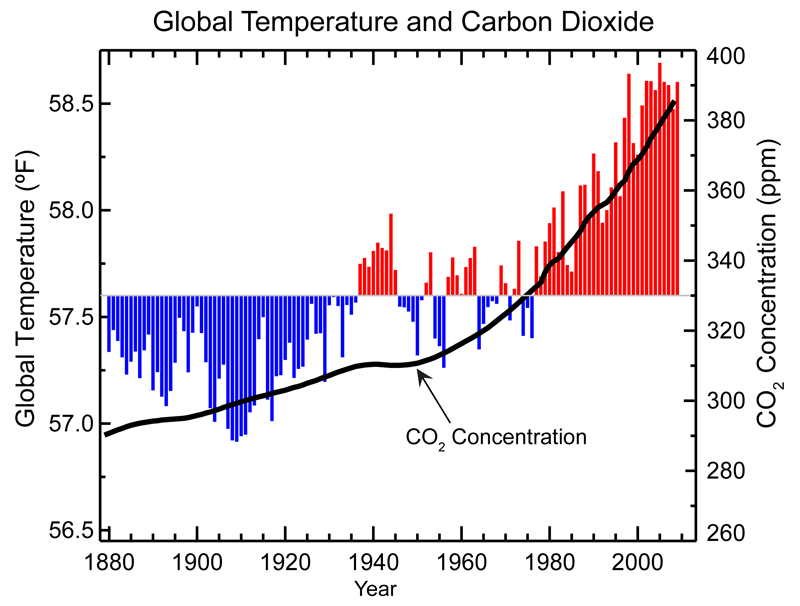Global Annual Temperature
Calculating the Earth's temperature is very challenging. Changes in sites, exposure, instruments, procedures, and observers can introduce errors and biases into the data. Observations before 1900 were more sparse and were concentrated in the land areas of the northern hemisphere. Attempts have been made to adjust for these and other issues with the data.
While no data set is perfect, several groups applying different techniques have reached similar conclusions. Furthermore, other kinds of observations support the evidence of warming. These include the observed reduction of glaciers in every continent, reductions in snow cover, shorter ice season on many lakes and rivers, and changes in the oceans.
Groups who have calculated global temperatures include NASA's Goddard Institute for Space Studies (GIS), the U.S. National Climatic Data Center, and the University of East Anglia, UK.
Below is the graph of global temperatures and the level of carbon dioxide in the atmosphere from 1880 to present, courtesy of the National Climatic Data Center (NCDC). NCDC has a more complete discussion of this graph along with other interesting material on their Global Climate Change Indicators page. A more in-depth discussion of computing global temperatures can be found on their Global Surface Temperature Anomalies page.
